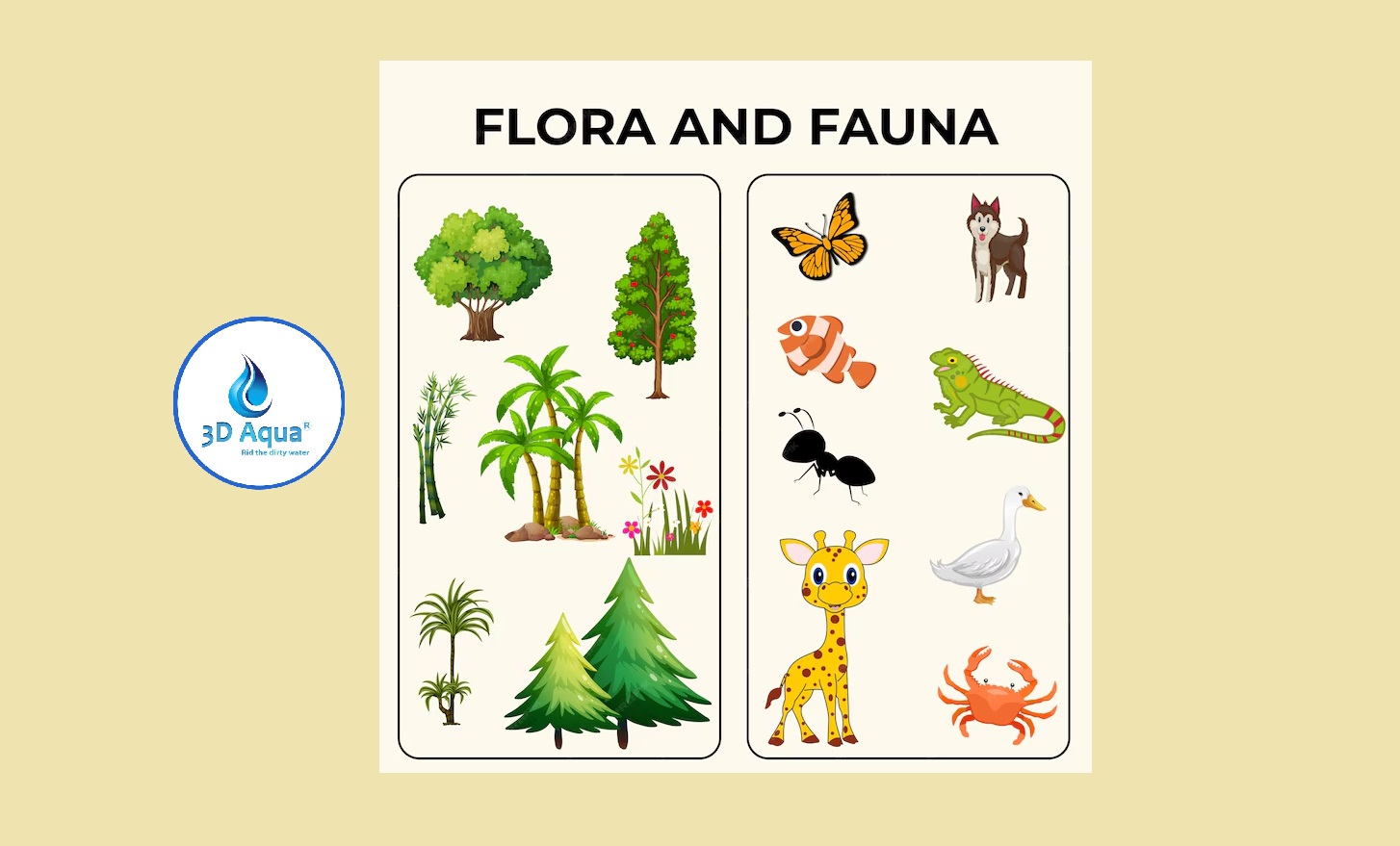The terms “flora” and “fauna” are rooted in Latin and refer to different aspects of the natural world. While “flora” pertains to plant life, “fauna” relates to animal life. These terms help us categorize and understand the complex web of life on Earth.
What is Flora?
Definition and Scope: Flora encompasses all the plant life that exists or has existed in a specific region or time period. This includes both native and introduced plant species. The study of flora is vital because plants form the foundation of ecosystems by producing oxygen and providing food and habitat for other organisms.
Importance of Flora:
- Ecosystem Support: Plants are primary producers, converting sunlight into energy through photosynthesis. They are essential for sustaining life by forming the base of the food chain and supporting the entire ecosystem.
- Biodiversity: Flora contributes to biodiversity by varying in species, size, and function. This diversity is crucial for ecosystem resilience and adaptation.
- Adaptability: Plants can thrive in diverse environments, from arid deserts to lush rainforests, demonstrating their remarkable adaptability.
Components of Flora:
- Species Identification: Floras often include common and scientific names, descriptions, habitats, and distribution. They may also provide information on flowering seasons and plant relationships.
- Scientific Tools: Key features of a flora include botanical keys for plant identification and detailed classifications based on characteristics such as taxonomy, reproductive strategies, and chromosome counts.
What is Fauna?
Definition and Scope: Fauna refers to the collective animal life present in a specific area or period. The term was popularized by Carl Linnaeus and covers all animal species from various habitats.
Categories of Fauna:
- Cryo-Fauna: Animals adapted to extremely cold environments, such as polar bears and Arctic foxes.
- Crypto-Fauna: Species found in protected or concealed habitats, like certain cave-dwelling organisms.
- In-Fauna: Animals living at the bottom of aquatic environments, including various types of benthic creatures.
- Macrofauna: Large soil-dwelling organisms, also known as soil organisms, which play a role in soil health and structure.
- Megafauna: Large animals, such as elephants and whales, that are notable for their size and impact on their ecosystems.
- Meiofauna: Small animals that live between the grains of sediment in aquatic environments, larger than microfauna but smaller than macrofauna.
- Mesofauna: Includes various arthropods and other mid-sized organisms found in soil and leaf litter.
- Pisces Fauna: Encompasses all fish species.
- Avifauna: Refers specifically to bird species.
Significance of Fauna:
- Ecological Balance: Animals play crucial roles in ecosystems, from pollination and seed dispersal to predator-prey relationships.
- Biodiversity Indicator: The diversity and health of animal populations often reflect the overall condition of their habitats.
The Relationship Between Flora and Fauna
Flora and fauna are interdependent components of ecosystems. Plants (flora) provide the necessary resources for animals (fauna), including food, shelter, and oxygen. Conversely, animals contribute to the health of plant life through processes like pollination, seed dispersal, and nutrient cycling. This intricate relationship maintains ecological balance and promotes biodiversity.
Conservation and Biodiversity
Protecting both flora and fauna is crucial for sustaining biodiversity and maintaining healthy ecosystems. Conservation efforts focus on preserving habitats, preventing species extinction, and managing natural resources effectively.
How to Contribute: Individuals and organizations can support conservation by:
- Promoting Sustainable Practices: Reduce, reuse, and recycle to minimize environmental impact.
- Supporting Conservation Programs: Engage with and support initiatives aimed at protecting natural habitats and endangered species.
- Educating Others: Raise awareness about the importance of biodiversity and the roles of different species in the ecosystem.
At 3D Aqua, we are committed to environmental sustainability and the preservation of biodiversity. As a leading manufacturer and supplier of water and wastewater treatment plants in India, we play a crucial role in ensuring clean water and effective wastewater management. Our offerings include Industrial RO Plants, Commercial RO Plants, water softeners, effluent treatment plants, and more, serving various sectors such as textiles, pharmaceuticals, and education.
For more information or inquiries, please contact us at +91 8963089630 or email info@3daqua.in.
FAQs
Q: What is flora?
A: Flora refers to the plant life of a region or period, including native and introduced species, essential for ecosystem support and biodiversity.
Q: What does fauna mean?
A: Fauna encompasses all animal life in a specific area or time, including various categories like megafauna, microfauna, and avifauna.
Q: How are flora and fauna related?
A: Flora and fauna are interdependent; plants provide resources for animals, and animals help with processes like pollination and seed dispersal.
Q: Why is conserving flora and fauna important?
A: Conserving flora and fauna maintains biodiversity, supports ecosystem balance, and ensures the health of natural habitats.
Q: What can I do to help with conservation?
A: Support conservation programs, practice sustainability, and educate others about the importance of protecting natural habitats and species.

